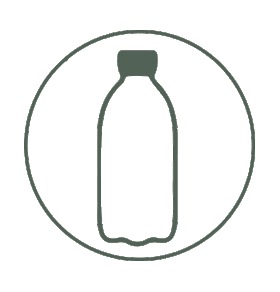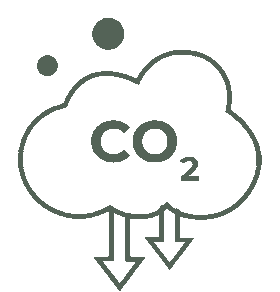Join us on a journey through the nuances of coffee brewing. Discover expert tips and methods for crafting the perfect cup at Brown Living's coffee journal.
“Wake up & smell the coffee”, “Coffee is a hug in the mug” & such more quotes hit us coffee lovers in the face. Nothing is more relatable than these ‘quotes’ when it comes to coffee.
While we talk about coffee here all of us are aware that each one of us likes our coffee our way. Also, depending on our mood the kind of coffee varies. Many of us have our favorite brewing methods too. And, there are a few explorers here too, right? Don’t worry if you’re not one.
We are listing here a few brewing techniques that every coffee lover must know. And, almost all methods are home brewing friendly! To list them here are some:
French Press Method
 French Press Coffee is easy to make and comparatively fast. It produces rich, somewhat textured coffee and can be a good way to produce several cups at once. To make French press coffee, add medium-coarse coffee to the press. Pour in boiling water and steep for three to four minutes. Make sure you don’t steep for too long otherwise the coffee will be bitter. And then press down the filter and serve. But, you might not be able to carry the French Press as it is a little tough to carry.
French Press Coffee is easy to make and comparatively fast. It produces rich, somewhat textured coffee and can be a good way to produce several cups at once. To make French press coffee, add medium-coarse coffee to the press. Pour in boiling water and steep for three to four minutes. Make sure you don’t steep for too long otherwise the coffee will be bitter. And then press down the filter and serve. But, you might not be able to carry the French Press as it is a little tough to carry.
Cold Brew Method
 Because it’s never heated, cold brew coffee is low in acidity and slightly sweet. It’s very easy to make but you need to be a little patient as it requires more time. To make cold-brew coffee, combine coarsely ground coffee beans with room-temperature water. Let the mixture brew for several hours or overnight, depending on how strong you like your coffee. Strain the grounds out and serve as-is or over ice.
Because it’s never heated, cold brew coffee is low in acidity and slightly sweet. It’s very easy to make but you need to be a little patient as it requires more time. To make cold-brew coffee, combine coarsely ground coffee beans with room-temperature water. Let the mixture brew for several hours or overnight, depending on how strong you like your coffee. Strain the grounds out and serve as-is or over ice.
AeroPress Method
 The AeroPress is a handheld coffee maker that produces excellent espresso-type coffee quickly. It’s simple to use (just push!) and highly customizable, so you can experiment to find your favorite method. Add coffee beans, a paper filter, and hot water. Let it steep for your desired number of minutes and then push the plunger to filter the coffee. The only challenge here is keeping a check on the paper filters.
The AeroPress is a handheld coffee maker that produces excellent espresso-type coffee quickly. It’s simple to use (just push!) and highly customizable, so you can experiment to find your favorite method. Add coffee beans, a paper filter, and hot water. Let it steep for your desired number of minutes and then push the plunger to filter the coffee. The only challenge here is keeping a check on the paper filters.
Pour-Over Method
 Basic pour-overs come in a range of sizes and designs but generally brew directly into your mug through a paper filter. To brew pour-over coffee, set up the pour-over on top of a mug and add a paper filter. The medium grounds go inside the filter, and then you pour boiling water on top.
Basic pour-overs come in a range of sizes and designs but generally brew directly into your mug through a paper filter. To brew pour-over coffee, set up the pour-over on top of a mug and add a paper filter. The medium grounds go inside the filter, and then you pour boiling water on top.
Moka Pot Method
 Moka pots produce coffee that is similar to espresso. To brew using a Moka pot, add fine grounds and water to the brewer and place it on the stovetop. The water will heat up and turn into steam, passing through the grounds and condensing into brewed coffee on the top.
Moka pots produce coffee that is similar to espresso. To brew using a Moka pot, add fine grounds and water to the brewer and place it on the stovetop. The water will heat up and turn into steam, passing through the grounds and condensing into brewed coffee on the top.
Chemex Filter Method
 Chemex Filter Coffee is good if you like the taste of pour over & want to produce multiple cups at once. To make Chemex coffee, add one of Chemex’s thick filters to the top of the brewer. Fill it with medium-coarse coffee beans and add hot water. Bonus Tip: Opting for a reusable filter or a French press can also reduce waste and save money over time.
Chemex Filter Coffee is good if you like the taste of pour over & want to produce multiple cups at once. To make Chemex coffee, add one of Chemex’s thick filters to the top of the brewer. Fill it with medium-coarse coffee beans and add hot water. Bonus Tip: Opting for a reusable filter or a French press can also reduce waste and save money over time.
Percolator Method
 Electric models plug into the wall and don’t require you to use a stove. Stovetop models are great for camping or home use because they can be used on stoves and open fires alike. Percolators work by moving boiling water through coarse coffee grounds in cycles. Brewing takes about 10 minutes, though you can do it for less if you prefer your coffee less strong.
Electric models plug into the wall and don’t require you to use a stove. Stovetop models are great for camping or home use because they can be used on stoves and open fires alike. Percolators work by moving boiling water through coarse coffee grounds in cycles. Brewing takes about 10 minutes, though you can do it for less if you prefer your coffee less strong.
The Must-Do Checklist:
- Make sure everything your coffee will touch is as close to the brewing temperature as possible before you start brewing.
- Set up your filter by soaking it in hot water and letting it drain before brewing a pour-over. It heats the filter to the proper temperature and removes a significant amount of the paper flavour. Ensure all ground coffee is in contact with water at the same time when brewing coffee.
- Brewing coffee at home can be a cost-saving and environmentally sustainable habit by reducing the amount of single-use cups and packaging that end up in landfills.
- Additionally, purchasing coffee beans in bulk can save money in the long run compared to buying individual cups at a coffee shop.
Impact:
- The production of coffee can have a significant environmental impact, including deforestation, soil degradation, and water pollution. However, by choosing sustainable and organic coffee, we can help reduce these negative effects.
- Sustainable coffee farming practices prioritize the protection of the environment and the well-being of farmers and their communities.
- Organic coffee is grown without the use of harmful pesticides and chemicals, which can further reduce environmental harm.
- By consuming sustainable and organic coffee, we can contribute to a more environmentally-friendly coffee industry.
Lastly, there are a lot of brewing methods developing even today as we speak but nothing matches the joy of enjoying your coffee in your favorite mug & favorite spot while you sip it with a sigh of relief!
No matter what brewing technique you choose, the most important thing is that you enjoy your cup of coffee. So why not experiment and find a method that works best for you? With so many unique methods available, there’s sure to be one that will help you make the perfect cup of coffee every time!
Also, check out our selection of organic coffees, right here:







